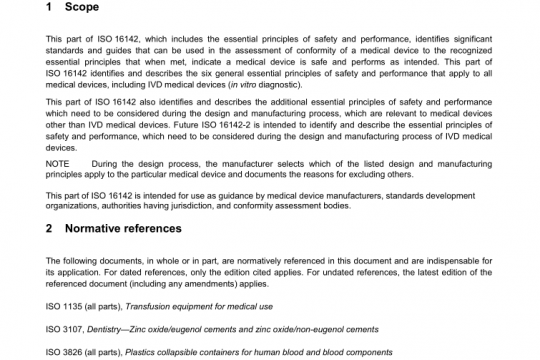AAMI HIT1000-1 (PS) pdf free download
AAMI HIT1000-1 (PS) pdf free download.Safety and effectiveness of health IT software and systems—Part 1 : Fundamental concepts, principles, and requirements.
3 Context and concepts 3.1 Health IT in a complex adaptive sociotechnical ecosystem Health IT encompasses a system of computers, software, and data operating in the context of a larger sociotechnical system that includes people, workflow, organization, external environment, and technology. This larger system—often called a sociotechnical ecosystem—is not just complex but adaptive, constantly evolving to address changes to these diverse elements. Safety, in such a complex system, is an emergent property that depends not just on technology, but also how that technology is configured and used. When a safety issue is identified, it may be addressed within the system by adaptations, such as clinician workarounds, software modifications, staffing adjustments, or changes in technology. The adaptive nature of the health IT system is necessary, of course, but adaptations addressing the root causes are preferred and adaptations must not increase risk or raise new safety issues. Health IT software exists as part of the technology component of this sociotechnical ecosystem. It can be incorporated into a health IT system, which may also contain other health IT software and IT infrastructure. Health IT software, health IT systems, and other supporting infrastructure, such as databases, servers, data centers, etc., are all part of the technology component of the healthcare sociotechnical ecosystem as shown in Figure 1 .3.2 Health IT lifecycles Any distinctly identifiable software product intended for healthcare or well-being is part of the technology component of the healthcare ecosystem and is usually part of a larger health IT system. The health IT software could give instructions to hardware devices; collect, store, and manipulate data; exchange data with other systems; make treatment recommendations; or provide other functions or services. An analogy can be made that this health IT software is like a living organism; it is conceived, brought into existence, matures and eventually dies. We can identify major stages of the lifecycle with identifiable entry and exit criteria, and smaller steps within these stages that have less distinguishable boundaries. The health IT software progresses through the lifecycle stages. Health IT systems are composed of integrated software and hardware components assembled for a specified healthcare purpose. These systems also have their own lifecycle[s]. It is important to emphasize, however, that the analogy with a living organism does not hold for the sociotechnical environment. A more apt analogy would be an ecosystem (where many types of organisms exist in complex and dynamic relationships). The sociotechnical environment is dynamic and evolves and changes over time, but it cannot be said to mature and reach an end-of-life point. Changes in the socio-technical environment, including relationships between individual components, can significantly impact health IT systems and necessitate modifications and adaptations as health IT systems move through their lifecycle. 3.3 Data management across the lifecycle Data follows a lifecycle similar to that of any product; it is created, modified, and eventually deleted or archived. Incorrect or insufficient data management and oversight can result in data incompatibilities, unauthorized changes to data, loss of traceability, incomplete data, or incorrect data. These conditions can result in adverse events that are difficult to detect and analyze. AAMI HIT1000-1 (PS) pdf download.
Other IEC Standards
-

ANSI AAMI ISO 16142-1 pdf free download – non-IVD medical devices and guidance on the selection of standards
AAMI standards list DOWNLOAD -

ANSI AAMI ISO 16142-2 pdf free download – General essential principles and additional specifc essential principles
AAMI standards list DOWNLOAD


